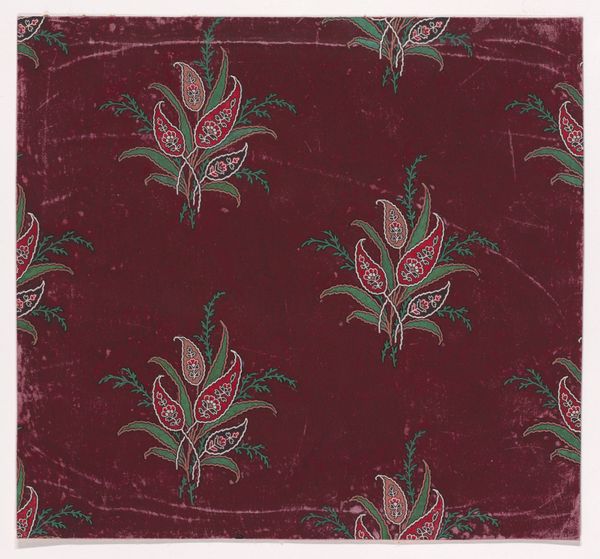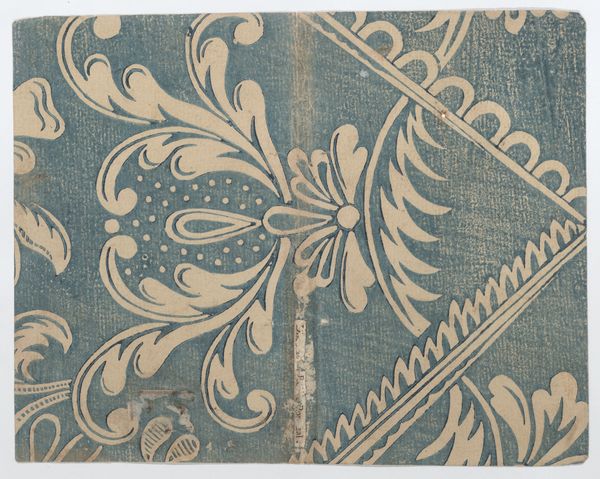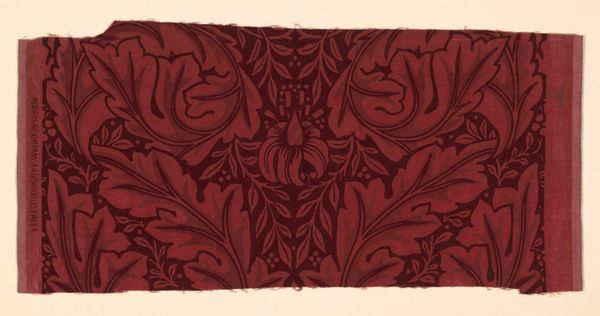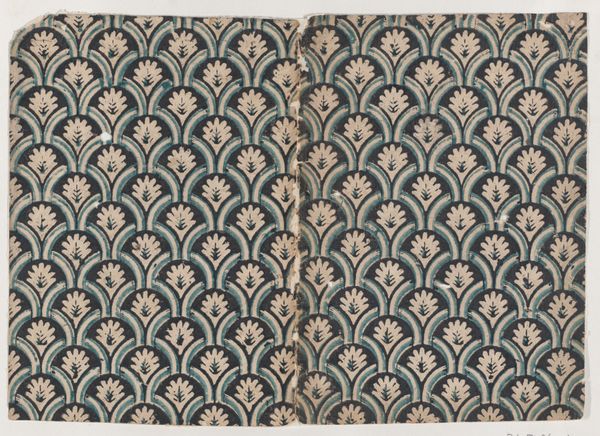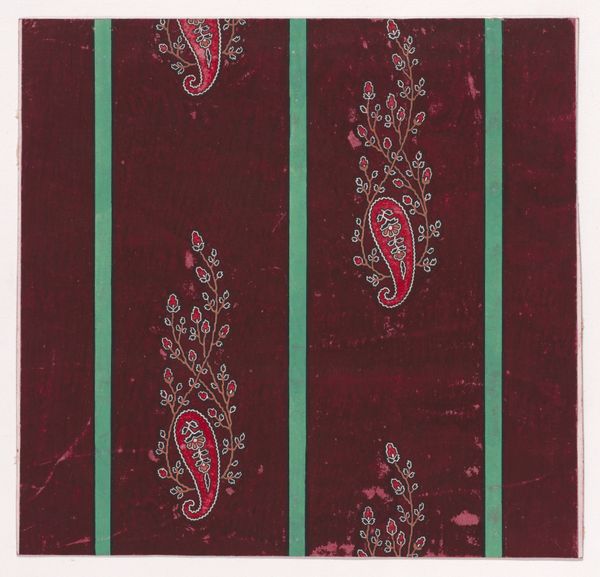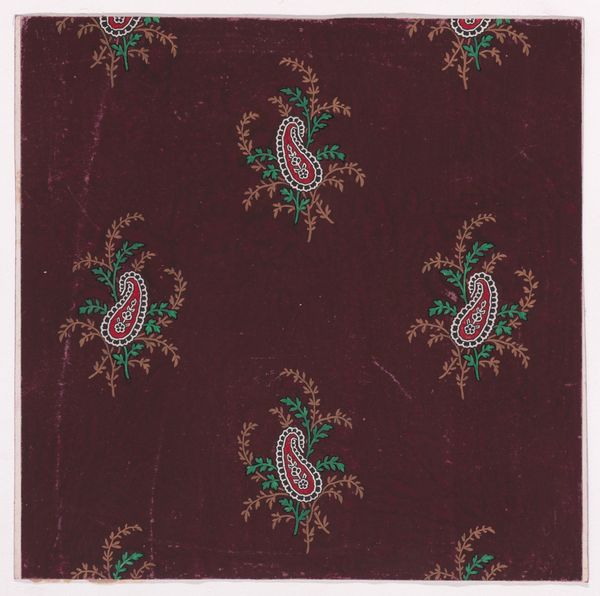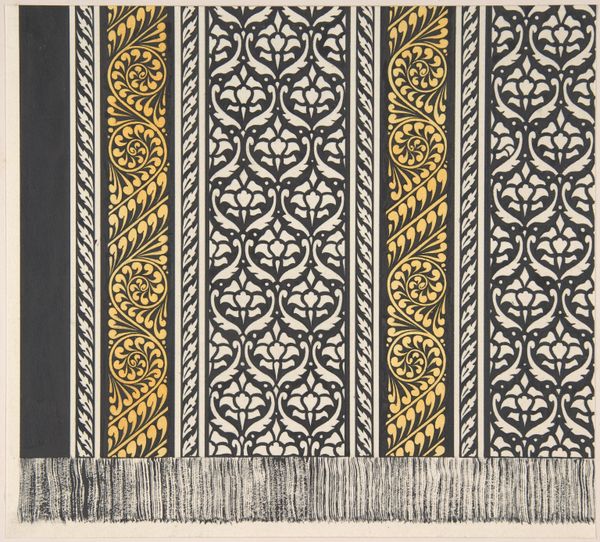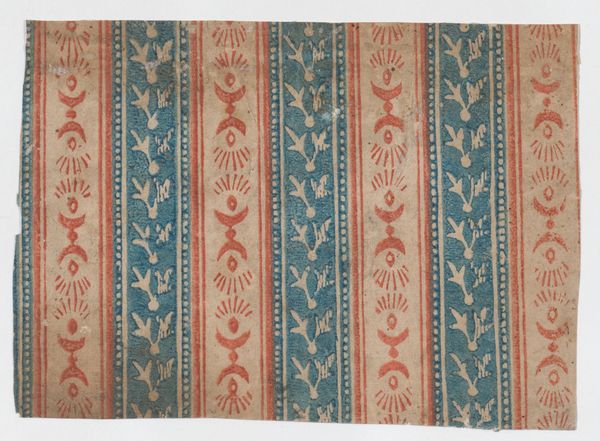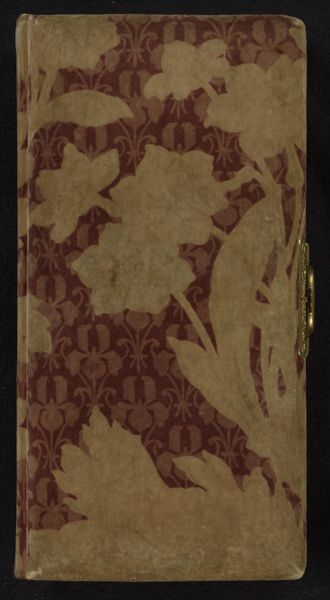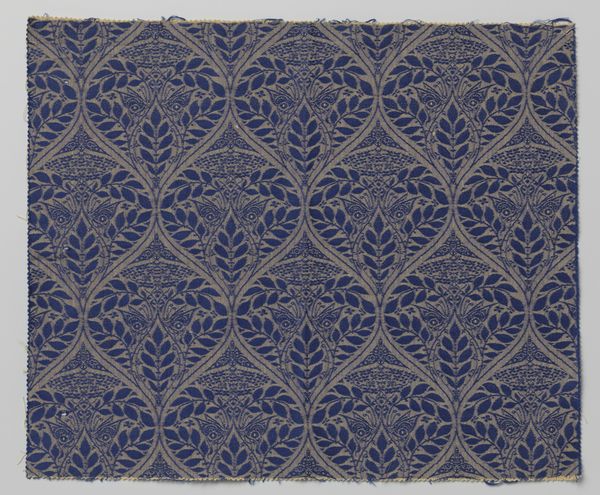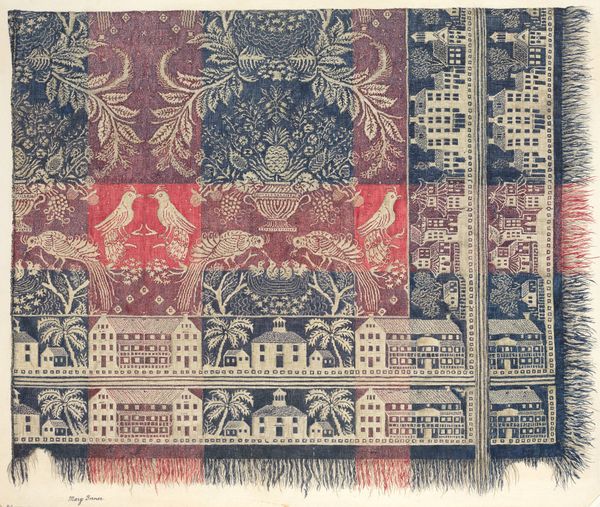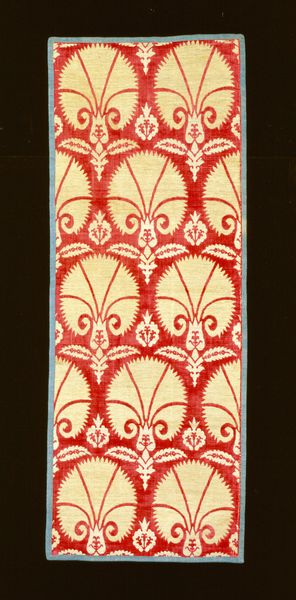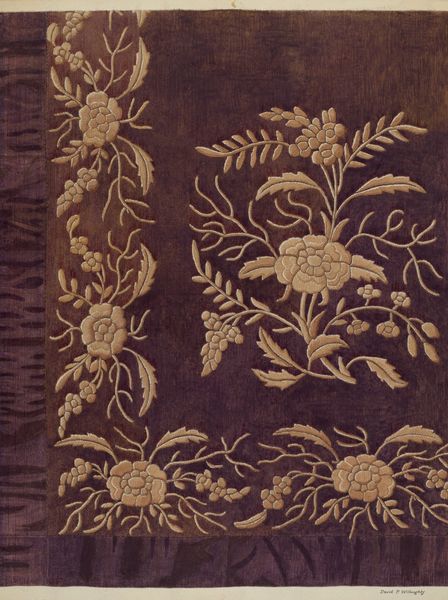
Textile Design with Alternating Vertical Rows of Bunches of Large Paisley-Inspired Stylized Leaves and Branches with Pairs of Stylized Leaves Separated by Vertical Stripes 1840
0:00
0:00
textile, paper
#
textile
#
paper
#
decorative-art
Dimensions: Sheet: 7 5/16 × 8 11/16 in. (18.6 × 22 cm)
Copyright: Public Domain
Editor: Here we have an anonymous textile design from around 1840, showcasing stylized paisley leaves and branches. It looks like a print on fabric, and I find its repetitive pattern quite captivating. What's your take on this, from your perspective? Curator: The key here is materiality. It’s a textile design, a blueprint for something meant to be produced, consumed, and quite literally worn. These paisley patterns were extremely popular, feeding into a huge market. It begs the question: where was it produced, by whom, and for what social class? Think of the labour involved – from the designer to the artisans realizing the design in fabric, possibly under exploitative conditions. Editor: So you're emphasizing the production process and its societal implications? How does that affect how we see the piece itself? Curator: Precisely! This isn't just decoration. It reflects Victorian consumer culture, the burgeoning textile industry, and global trade routes that brought the paisley motif to the forefront. Look at the design – it suggests mass production, efficiency, and affordability for a certain segment of society. We need to question whose story is missing. What materials were used, and from where were they sourced? Editor: That’s fascinating; I never thought about it in terms of labour and economics. It shifts my perspective quite a bit. Curator: It challenges that high art/craft binary, right? It asks us to value the often-overlooked labour embedded within these decorative forms, considering how its materials and creation reflect the culture that made it. Editor: I'll definitely be looking at textiles differently from now on, keeping in mind the whole story behind its making. Thanks!
Comments
No comments
Be the first to comment and join the conversation on the ultimate creative platform.
